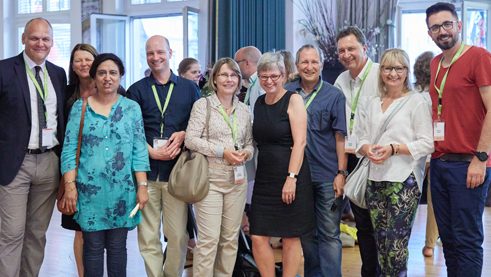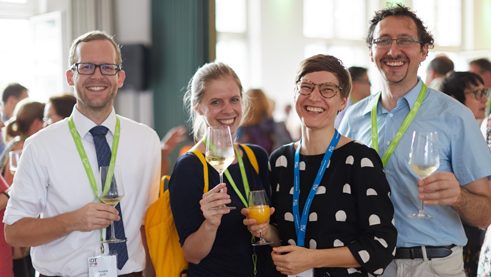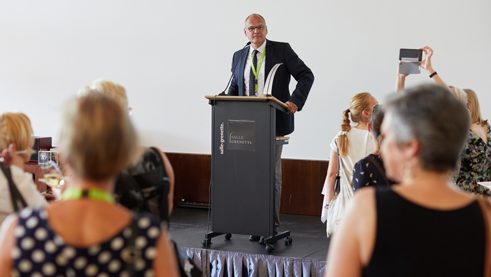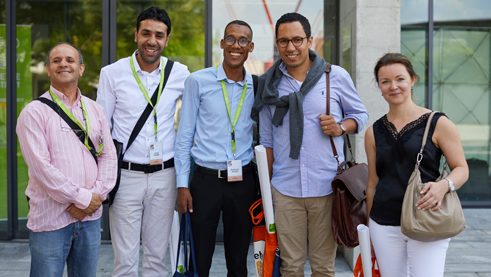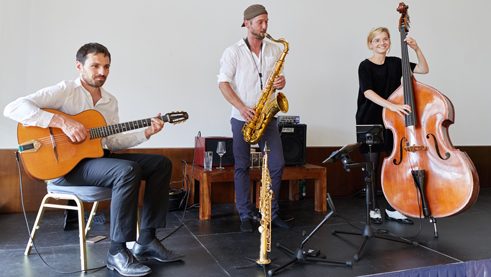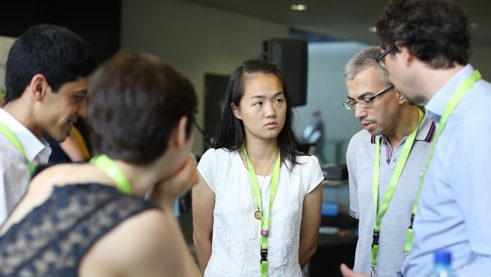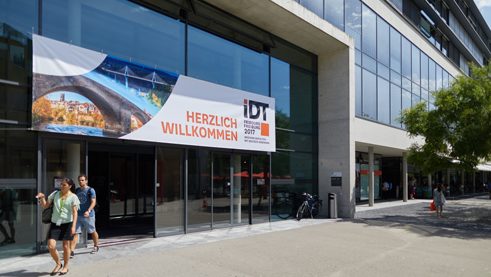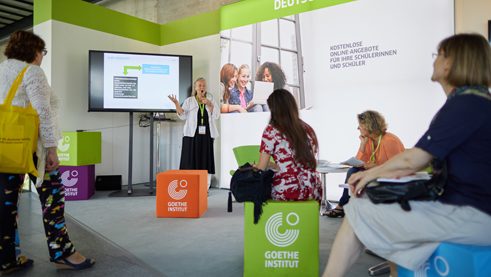IDT 2017
German as A Voice in the Chorus
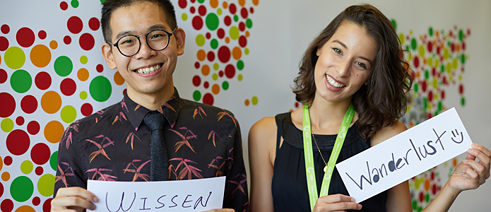
Participants present their favorite german words at the booth of PASCH-net during the PASCH-Forum of the IDT.
| Photo: Bernhard Ludewig
On 4 August, the 50th anniversary of the world’s largest conference for German as a foreign and second language was topped off by a resolution: in Fribourg, Switzerland, 1,700 teachers voted in favour of integrating immigrants’ native languages more extensively into the concept of worldwide teaching.
The International Conference of German Teachers (IDT), held in Fribourg, Switzerland in early August, is considered the field’s summit where German teachers from five continents meet with their academic colleagues. Every four years they discuss social developments and teaching methods in alternating locations.
New formats in German lessons
The challenge for teachers is to devise detailed concepts to make multilingualism useful for the teaching of German as a foreign and second language. Thirty lectures and sections with different focal points invited attendees to discuss the combination of theory, research and practice. Didactic presentations provided a new format: In short films made for their colleagues, German teachers document the actual conditions that impact their teaching, for example in India, where class sizes of up to 80 children are no exception.The principles, recommendations and demands of the resolution aim to promote German in the vocational education and training of all immigrants, irrespective of their country of origin and residence status. At the same time, it also calls upon policymakers to provide more funding for the initial school integration of immigrant children and young people.
Johannes Ebert, CEO of the Goethe-Institut, spoke about its motivations for participation. In addition to film screenings, readings and the exhibition Germany, Land of Inventors, the contribution made by the Goethe-Institut consists of its educational expertise, since one of its main competencies is teacher training. “The combination of academic knowledge and reflected practice is IDT’s special feature and is moving German teaching forward all over the world,” Ebert emphasised. Due to the lack of German teaching staff in many countries, collaboration such as this is essential. “The future of German teaching is also determined by the synergies that arise when intermediary organisations such as the Goethe-Institut work together closely with the International Association of German Teachers and the national German teachers’ associations.”
